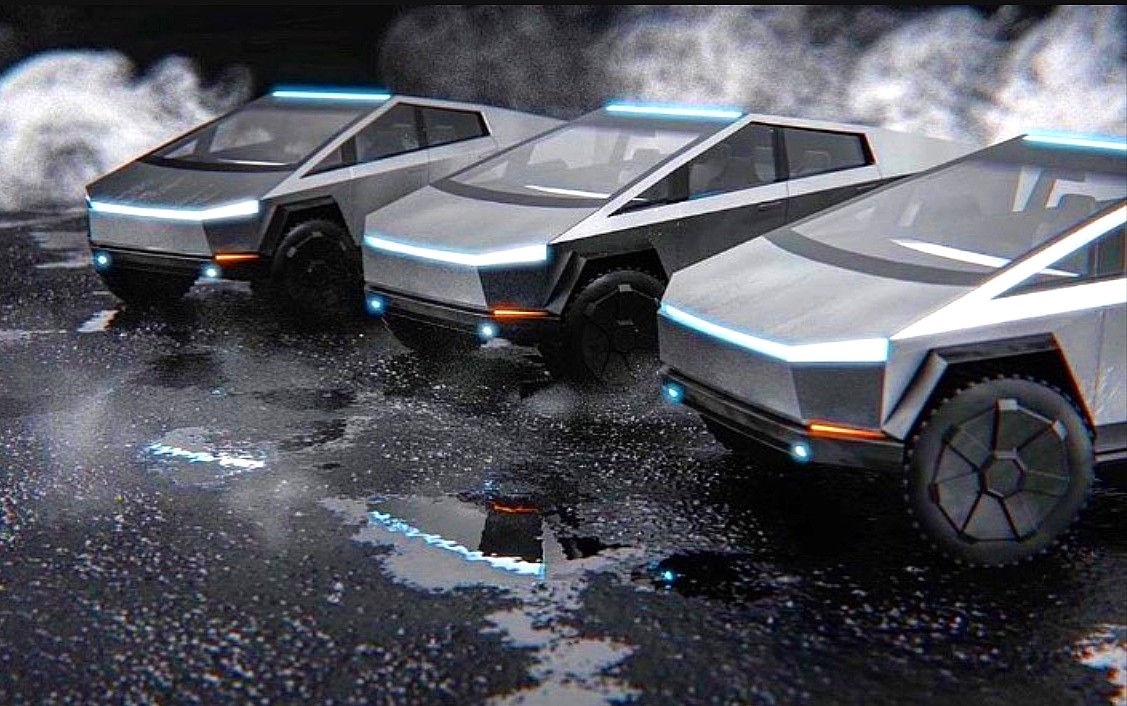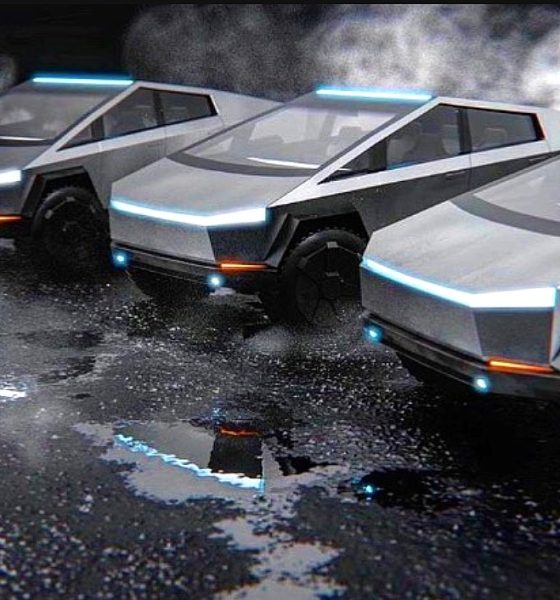

News
US state hosting Tesla’s Cybertruck factory targets EV owners with higher fees
Texas may have welcomed Tesla warmly with its support for the electric car maker’s Gigafactory TX project, but the state, or at least some of its officials, still seem to operate under the premise that EV adoption is something that could be stopped. This was highlighted recently by Rep. Ken King, a Panhandle Republican who wishes to add fees imposed on electric vehicle drivers in the state.
Under King’s proposal, electric car owners would be hit with an additional $200 registration and annual renewal fee to help shore up the state’s road funds, which rely on gas taxes. King’s proposal also penalizes owners of hybrid vehicles, though not as much, with the representative suggesting an additional $100 for registrations and renewals.
As noted in a report from the Houston Chronicle, revenue from the proposed additional EV registration and renewal fees would be going to the state highway fund. The Texas Comptroller has reported about $14.2 billion in revenue during 2019, and estimates suggest that 2020 revenues would be at around $14.6 billion.
Drivers of gas-powered vehicles in Texas pay a state tax of $0.20 per gallon, which is used to support the highway fund. As vehicles became more efficient and amidst the emergence of electric cars and hybrids, however, the state’s annual gas tax revenues have flattened and even declined. During the fiscal year 2020, Texas collected $2.6 billion in gas tax revenue. That’s about 7% less than the $2.8 billion collected in the fiscal year 2019.
King is not only aiming for higher EV registrations and renewals, either. This week, he also introduced a bill that would add a $0.01 tax to every kWh of energy generated by wind, solar, coal, and nuclear power. Interestingly enough, power generated from natural gas sources would be exempt under King’s bill.
If the Texas representative’s efforts prove successful, car buyers in the state may very well be disenchanted to purchase all-electric vehicles, especially considering that one of the most notable advantages of EVs is their affordable operating costs. By imposing higher fees on electric cars, the state would give the impression that it is more financially sound for consumers to go for gas guzzlers instead.
In several other states where EVs are targeted with extra fees, the additional charges could climb so high that electric car owners can end up paying more than what they would have paid in gas taxes had they owned fossil fuel-powered cars instead. Consumer Reports noted that in some cases, EV owners end up paying up to four times more than what they would have paid in gas taxes.
Overall, the proposal from the TX official is unfortunate, especially considering that Tesla is building its roots in the state. Gigafactory Texas is poised to be the electric car maker’s most impressive vehicle production facility yet, and it would build what could very well be the defining EV of the post-Tesla Model S era. The Cybertruck is a unique all-American vehicle that will be made in Texas, after all, so it would be pretty nonsensical if the vehicle ends up costing its buyers more in registration and renewal fees just because it doesn’t pollute the air.

News
Tesla FSD fleet is nearing 7 billion total miles, including 2.5 billion city miles
As can be seen on Tesla’s official FSD webpage, vehicles equipped with the system have now navigated over 6.99 billion miles.

Tesla’s Full Self-Driving (Supervised) fleet is closing in on almost 7 billion total miles driven, as per data posted by the company on its official FSD webpage.
These figures hint at the massive scale of data fueling Tesla’s rapid FSD improvements, which have been quite notable as of late.
FSD mileage milestones
As can be seen on Tesla’s official FSD webpage, vehicles equipped with the system have now navigated over 6.99 billion miles. Tesla owner and avid FSD tester Whole Mars Catalog also shared a screenshot indicating that from the nearly 7 billion miles traveled by the FSD fleet, more than 2.5 billion miles were driven inside cities.
City miles are particularly valuable for complex urban scenarios like unprotected turns, pedestrian interactions, and traffic lights. This is also the difference-maker for FSD, as only complex solutions, such as Waymo’s self-driving taxis, operate similarly on inner-city streets. And even then, incidents such as the San Francisco blackouts have proven challenging for sensor-rich vehicles like Waymos.
Tesla’s data edge
Tesla has a number of advantages in the autonomous vehicle sector, one of which is the size of its fleet and the number of vehicles training FSD on real-world roads. Tesla’s nearly 7 billion FSD miles then allow the company to roll out updates that make its vehicles behave like they are being driven by experienced drivers, even if they are operating on their own.
So notable are Tesla’s improvements to FSD that NVIDIA Director of Robotics Jim Fan, after experiencing FSD v14, noted that the system is the first AI that passes what he described as a “Physical Turing Test.”
“Despite knowing exactly how robot learning works, I still find it magical watching the steering wheel turn by itself. First it feels surreal, next it becomes routine. Then, like the smartphone, taking it away actively hurts. This is how humanity gets rewired and glued to god-like technologies,” Fan wrote in a post on X.
News
Tesla starts showing how FSD will change lives in Europe
Local officials tested the system on narrow country roads and were impressed by FSD’s smooth, human-like driving, with some calling the service a game-changer for everyday life in areas that are far from urban centers.

Tesla has launched Europe’s first public shuttle service using Full Self-Driving (Supervised) in the rural Eifelkreis Bitburg-Prüm region of Germany, demonstrating how the technology can restore independence and mobility for people who struggle with limited transport options.
Local officials tested the system on narrow country roads and were impressed by FSD’s smooth, human-like driving, with some calling the service a game-changer for everyday life in areas that are far from urban centers.
Officials see real impact on rural residents
Arzfeld Mayor Johannes Kuhl and District Administrator Andreas Kruppert personally tested the Tesla shuttle service. This allowed them to see just how well FSD navigated winding lanes and rural roads confidently. Kruppert said, “Autonomous driving sounds like science fiction to many, but we simply see here that it works totally well in rural regions too.” Kuhl, for his part, also noted that FSD “feels like a very experienced driver.”
The pilot complements the area’s “Citizen Bus” program, which provides on-demand rides for elderly residents who can no longer drive themselves. Tesla Europe shared a video of a demonstration of the service, highlighting how FSD gives people their freedom back, even in places where public transport is not as prevalent.
What the Ministry for Economic Affairs and Transport says
Rhineland-Palatinate’s Minister Daniela Schmitt supported the project, praising the collaboration that made this “first of its kind in Europe” possible. As per the ministry, the rural rollout for the service shows FSD’s potential beyond major cities, and it delivers tangible benefits like grocery runs, doctor visits, and social connections for isolated residents.
“Reliable and flexible mobility is especially vital in rural areas. With the launch of a shuttle service using self-driving vehicles (FSD supervised) by Tesla in the Eifelkreis Bitburg-Prüm, an innovative pilot project is now getting underway that complements local community bus services. It is the first project of its kind in Europe.
“The result is a real gain for rural mobility: greater accessibility, more flexibility and tangible benefits for everyday life. A strong signal for innovation, cooperation and future-oriented mobility beyond urban centers,” the ministry wrote in a LinkedIn post.
News
Tesla China quietly posts Robotaxi-related job listing
Tesla China is currently seeking a Low Voltage Electrical Engineer to work on circuit board design for the company’s autonomous vehicles.

Tesla has posted a new job listing in Shanghai explicitly tied to its Robotaxi program, fueling speculation that the company is preparing to launch its dedicated autonomous ride-hailing service in China.
As noted in the listing, Tesla China is currently seeking a Low Voltage Electrical Engineer to work on circuit board design for the company’s autonomous vehicles.
Robotaxi-specific role
The listing, which was shared on social media platform X by industry watcher @tslaming, suggested that Tesla China is looking to fill the role urgently. The job listing itself specifically mentions that the person hired for the role will be working on the Low Voltage Hardware team, which would design the circuit boards that would serve as the nervous system of the Robotaxi.
Key tasks for the role, as indicated in the job listing, include collaboration with PCB layout, firmware, mechanical, program management, and validation teams, among other responsibilities. The role is based in Shanghai.
China Robotaxi launch
China represents a massive potential market for robotaxis, with its dense urban centers and supportive policies in select cities. Tesla has limited permission to roll out FSD in the country, though despite this, its vehicles have been hailed as among the best in the market when it comes to autonomous features. So far, at least, it appears that China supports Tesla’s FSD and Robotaxi rollout.
This was hinted at in November, when Tesla brought the Cybercab to the 8th China International Import Expo (CIIE) in Shanghai, marking the first time that the autonomous two-seater was brought to the Asia-Pacific region. The vehicle, despite not having a release date in China, received a significant amount of interest among the event’s attendees.








